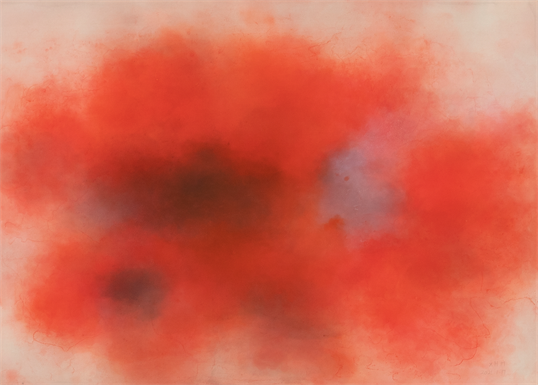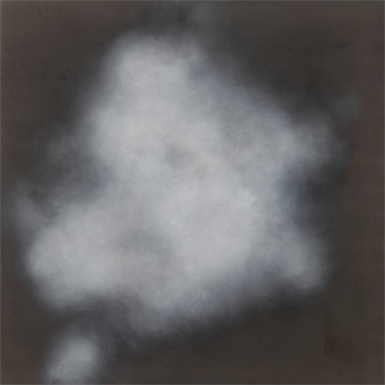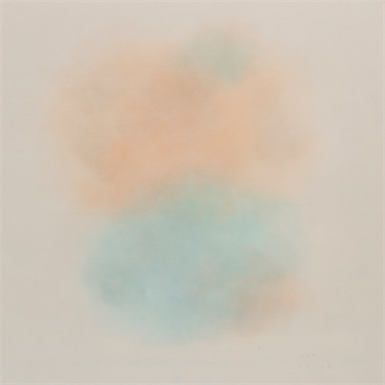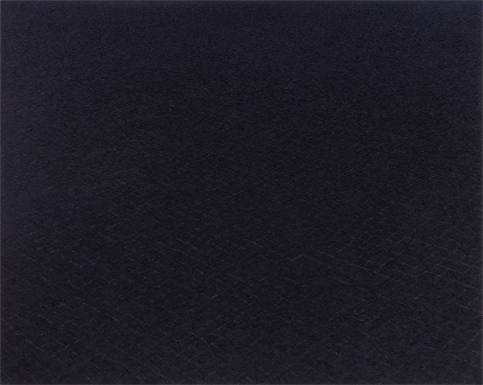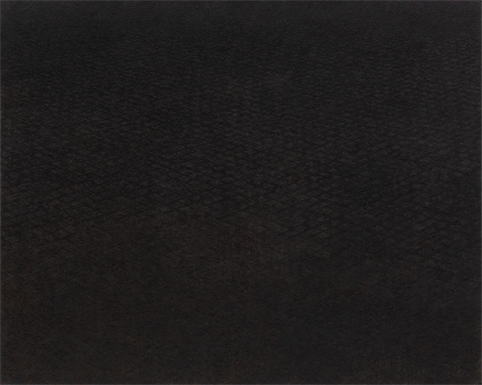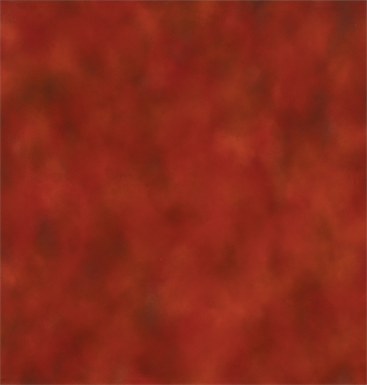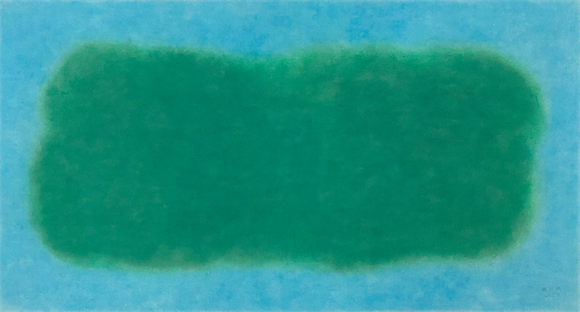Jul 23 - Sep 03, 2022
Press Release
Xu Hongming - The Concept of “Formless”
When looking at Xu Hongming’s works, we can immediately - as if without thinking - define them as abstract paintings. Then, upon further interpretation, we may try to describe whether those in the paintings are clouds, air flow, or some indescribable, yet abstractly definable sense of flow. We can try our best to describe the appearance and shapes within the paintings, but the reality is that it is difficult to bridge the gap between perception and language.
Yve-Alain Bois and Rosalind Krauss jointly curated an exhibition named “L’informe: moded’emploi” in the summer of 1996 at the Pompidou Center in Paris, France. Most of the artists participating in the exhibition were well-recognized modernist artists at that time. The two curators were undoubtedly influenced by the philosophical concept of “Formless”, which introduced by the French thinker Georges Bataille around 1930s. The exhibition was intended to criticize and challenge the mainstream art history and taxonomy.
As Georges Bataille wrote in his book Visions of Excess: “… …Formless is not only an adjective having a given meaning but a term that serves to bring things down in the world, generally requiring each thing to have its own form. … …All philosophies have nothing else to ask for: just to put a robe on everything that exists, a mathematician's robe. To assert that the universe is nothing but formless is to say that the universe is something like a spider or saliva.” Perhaps the concept of Formless introduced by Georges Bataille can help us to understand the grey area between art works and everyday language from one perspective.
Classify what you see and use language to summarize and make it clear. This may be sourced from a survival instinct, and certainty can make it easier to predict the future. The process of turning facts into language will certainly simplify things, and it requires such insight to appreciate Xu Hongming's works. It is not that we need to completely abandon language, since it can still quickly bring the audience closer to the works. However, the concept of Formless reminds us that our thinking does not only necessarily ends up in language, but to always keep it open and active before language is formed.
This exhibition consists of works of the early series of “Uncertain Shape” and some from the recently created “Not Cloud, Not Fog, Not QI” series. The “Uncertain Shape” series is the beginning of artists' attempt to remove the forms. Looking closely at overlapping squares, it can be found that the edges are blurred with pigments made of a special mineral powder. As a result, the spatial relationship between the patterns has been gradually dissolved. In the series of “Not Cloud, Not Fog, Not QI”, the patterns in the paintings have completely disappeared. However, the disappearance of the lines or shapes does not mean that it is empty, leaving only a mass of “existence” that are not cloud, not fog, not QI, which can be understood as a figurative expression of the artist's world outlook. This is the law of dynamic continuation, development and reorganization of the original structure after self-deconstruction.
Although the article is trying to understand the work with Georges Bataille’s concept of Formless, it is obvious that it sounds somewhat scripted deriving from its use of texts from a hundred years ago, and as a result, we need to combine it with current context. After a hundred years’ development from structuralism to deconstruction in the fields of art, architecture, clothing, etc. People began to gradually adapt to this mode of establishment, deconstruction and re-establishment. Compared with the extreme purposes of rebellion, breaking, limit and overstepping a boundary when the concept of Formless was first introduced. The transformation process has become much smoother despite that we are still in this cycle.
From “Uncertain Shape” series to the “Not Cloud, Not Fog, Not QI” series, it can be seen that Xu Hongming's self-deconstruction process is also mild, more like taking advantage of the trend and looking for the way of nature. Xu Hongming's art is integrated, not only the integration shown on the paintings, but also the spiritual integration of China and the West. Xu Hongming's art is also independent and inclusive with his own logic, guided by the exploration of artistic noumenon and not limited by the existing fixed forms and media. Xu Hongming's works have shown another way of artistic creation: the expression of ideas on canvas in a natural and comfortable way without the intervention of complicated factors.
Curator Article
Xu Hongming - The Concept of “Formless”
By LU Weimin
When looking at Xu Hongming’s works, we can immediately - as if without thinking - define them as abstract paintings. Then, upon further interpretation, we may try to describe whether those in the paintings are clouds, air flow, or some indescribable, yet abstractly definable sense of flow. We can try our best to describe the appearance and shapes within the paintings, but the reality is that it is difficult to bridge the gap between perception and language.
Yve-Alain Bois and Rosalind Krauss jointly curated an exhibition named “L’informe: moded’emploi” in the summer of 1996 at the Pompidou Center in Paris, France. Most of the artists participating in the exhibition were well-recognized modernist artists at that time. The two curators were undoubtedly influenced by the philosophical concept of “Formless”, which introduced by the French thinker Georges Bataille around 1930s. The exhibition was intended to criticize and challenge the mainstream art history and taxonomy.
As Georges Bataille wrote in his book Visions of Excess: “… …Formless is not only an adjective having a given meaning but a term that serves to bring things down in the world, generally requiring each thing to have its own form. … …All philosophies have nothing else to ask for: just to put a robe on everything that exists, a mathematician's robe. To assert that the universe is nothing but formless is to say that the universe is something like a spider or saliva.” Perhaps the concept of Formless introduced by Georges Bataille can help us to understand the grey area between art works and everyday language from one perspective.
Classify what you see and use language to summarize and make it clear. This may be sourced from a survival instinct, and certainty can make it easier to predict the future. The process of turning facts into language will certainly simplify things, and it requires such insight to appreciate Xu Hongming's works. It is not that we need to completely abandon language, since it can still quickly bring the audience closer to the works. However, the concept of Formless reminds us that our thinking does not only necessarily ends up in language, but to always keep it open and active before language is formed.
This exhibition consists of works of the early series of “Uncertain Shape” and some from the recently created “Not Cloud, Not Fog, Not QI” series. The “Uncertain Shape” series is the beginning of artists' attempt to remove the forms. Looking closely at overlapping squares, it can be found that the edges are blurred with pigments made of a special mineral powder. As a result, the spatial relationship between the patterns has been gradually dissolved. In the series of “Not Cloud, Not Fog, Not QI”, the patterns in the paintings have completely disappeared. However, the disappearance of the lines or shapes does not mean that it is empty, leaving only a mass of “existence” that are not cloud, not fog, not QI, which can be understood as a figurative expression of the artist's world outlook. This is the law of dynamic continuation, development and reorganization of the original structure after self-deconstruction.
Although the article is trying to understand the work with Georges Bataille’s concept of Formless, it is obvious that it sounds somewhat scripted deriving from its use of texts from a hundred years ago, and as a result, we need to combine it with current context. After a hundred years’ development from structuralism to deconstruction in the fields of art, architecture, clothing, etc. People began to gradually adapt to this mode of establishment, deconstruction and re-establishment. Compared with the extreme purposes of rebellion, breaking, limit and overstepping a boundary when the concept of Formless was first introduced. The transformation process has become much smoother despite that we are still in this cycle.
From “Uncertain Shape” series to the “Not Cloud, Not Fog, Not QI” series, it can be seen that Xu Hongming's self-deconstruction process is also mild, more like taking advantage of the trend and looking for the way of nature. Xu Hongming's art is integrated, not only the integration shown on the paintings, but also the spiritual integration of China and the West. Xu Hongming's art is also independent and inclusive with his own logic, guided by the exploration of artistic noumenon and not limited by the existing fixed forms and media. Xu Hongming's works have shown another way of artistic creation: the expression of ideas on canvas in a natural and comfortable way without the intervention of complicated factors.

